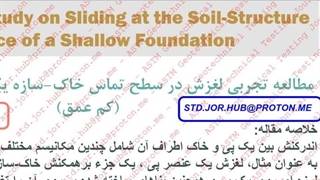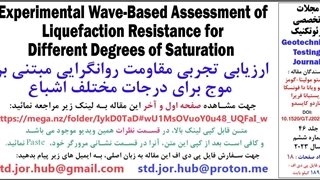
ASTM - GEOTECHNICAL TESTING JOURNAL
Experimental Wave-Based Assessment of Liquefaction Resistance for Different Degrees of Saturation - GTJ20230299
Experimental Wave-Based Assessment of Liquefaction Resistance for Different Degrees of Saturation
ABSTRACT
This paper presents the results of an experimental program carried out in the laboratory aimed at assessing the liquefaction resistance by correlations between longitudinal wave (P-wave) and shear wave (S-wave) velocities (VP and VS) and cyclic stress ratio from triaxial testing (CSRCTx) for different degrees of saturation (Sr). The liquefaction resistance was assessed using a cyclic triaxial apparatus equipped with Hall-effect transducers and bender elements, combining stress-based (large-strain level) and wave-based (small-strain level) approaches. These tests were carried out in soil specimens at relatively high degrees of saturation, which were estimated during testing by VP measurements interpreted using Biot’s theory. The results revealed that, for the same relative density and confinement stress, the S-wave-based approach did not predict the liquefaction resistance well because of the negligible variation in the stress state and soil stiffness for the assessed Sr values, which were above the air-entry value. In turn, the P-wave-based approach effectively predicted the liquefaction resistance increment of the TP-Lisbon sand for different Sr conditions because of the strong dependency of P-wave propagation
on the degree of saturation in granular media. This is a consequence of the most relevant factor conditioning the pore pressure buildup in partially saturated sands, e.g., the compressibility of the occluded air bubbles, which can be detected by VP but not by VS.
Keywords
liquefaction, partial saturation, wave propagation, laboratory tests, sands

نظرات (۲)